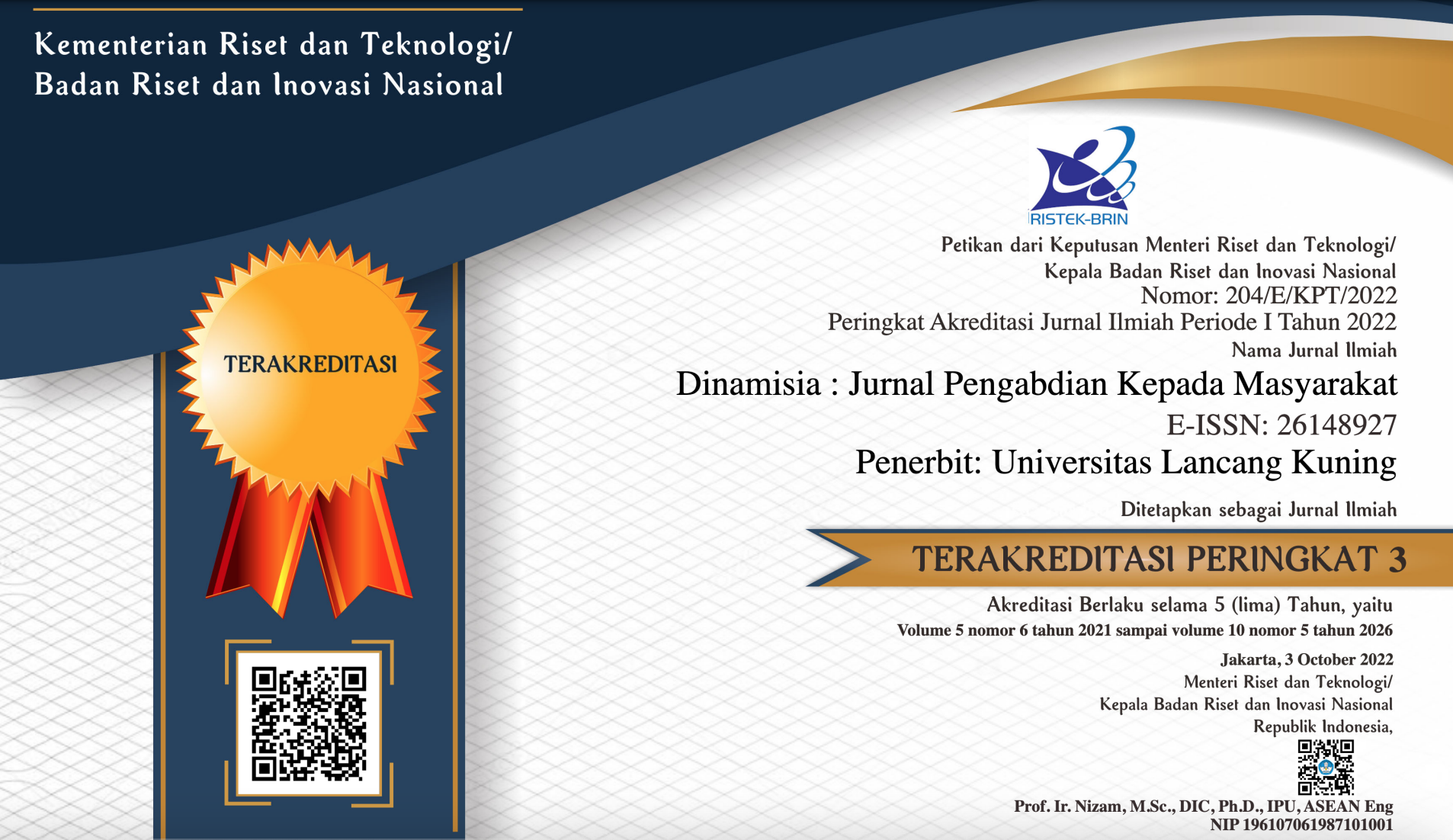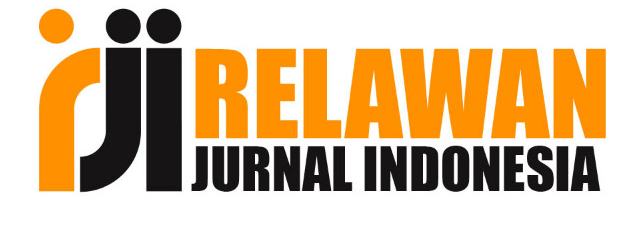Branding Kota Pinta Pada Teknologi Komunikasi Tangerang Live
Abstract
Tangerang City Government is trying to ready a smart city to provide convenience in all respects, one of which is the communication technology currently being used is the Tangerang LIVE application. Indirectly this can create good branding for the Tangerang City government. The Tangerang LIVE application has not been running as it should be, so the purpose of this research is to use this application to answer the needs and desires of the people of Tangerang City. This research was conducted with quantitative methods; this method can be answered the study's purpose. Like what the government runs this smart city through this application, the population is around Tangerang City. The study results found that smart city branding influences communication technology in the Tangerang Live application. Public services and delivery of information developed through digital communication by the Tangerang City Government are more integrated, monitored, effective, and efficient for the community
Downloads
References
Ahmed, I., & Perji, K. A. (2011). Mobile phone to youngsters: Necessity or addiction. Information Management and Business Review, 2(5), 229–238.
apjii. (n.d.). Asosiasi Penyelenggara Jasa Internet Indonesia. Retrieved October 20, 2020, from https://www.apjii.or.id/survei
Barovih, G., Sugara, E. P. A., & Nurussama. (2020). Pemanfaatan Aplikasi Sebagai Media Bantu Edukasi Agama Islam Untuk Anak Usia Dini. Dinamisia : Jurnal Pengabdian Kepada Masyarakat, 4(1), 152–160. https://doi.org/10.31849/dinamisia.v4i1.3339
Bedbury, S. (2003). A new brand world: 8 principles for achieving brand leadership in the 21st century. Penguin.
Chaerani, R. Y. (2011). Pengaruh City Branding Terhadap City Image (Studi Pencitraan Kota Solo:‘The Spirit of Java’). JRK, 2(4).
Christianto, P. A., Nuhayati, S., & Mujiyono, M. (2016). Kesiapan Kota Pekalongan Menuju Smart City. Jurnal Litbang Kota Pekalongan, 11.
Chui, K. T., Vasant, P., & Liu, R. W. (2019). Smart city is a safe city: Information and communication technology–enhanced urban space monitoring and surveillance systems: the promise and limitations. In Smart Cities: Issues and Challenges (pp. 111–124). Elsevier.
Coca-Stefaniak, A. (2014, June 1). Place branding and city centre management: Exploring international parallels in research and practice [Text]. ://www.ingentaconnect.com/content/hsp/jurr/2014/00000007/00000004/art00007
Cocchia, A. (2014). Smart and digital city: A systematic literature review. In Smart city (pp. 13–43). Springer.
Coen, D., Grant, W., & Wilson, G. (2010). The Oxford handbook of business and government. Oxford University Press.
Creswell, J. W., & Creswell, J. D. (2017). Research design: Qualitative, quantitative, and mixed methods approaches. Sage publications.
Dominick, J. R. (2010). The dynamics of mass communication: Media in the digital age. Tata McGraw-Hill Education.
Effendy, Onong Uchjana. (2008). Dinamika Komunikasi. Remaja Rosdakarya.
Florida, R. (2005). Cities and the Creative Class. Routledge. https://doi.org/10.4324/9780203997673
Gemiharto, I. (2018). STRATEGI BRANDING BIRO HUMAS KOTA BOGOR DALAM PELAKSANAAN PROGRAM BOGOR SMART CITY. Jurnal Politikom Indonesiana, 3(1), 104.
Goess, S., de Jong, M., & Meijers, E. (2016). City branding in polycentric urban regions: Identification, profiling and transformation in the Randstad and Rhine-Ruhr. European Planning Studies, 24(11), 2036–2056.
Grossberg, L., Wartella, E., Whitney, D. C., & Wise, J. M. (2006). Mediamaking: Mass media in a popular culture. Sage.
Hem, L. E., De Chernatony, L., & Iversen, N. M. (2003). Factors influencing successful brand extensions. Journal of Marketing Management, 19(7–8), 781–806.
Kim, A. J., & Johnson, K. K. (2016). Power of consumers using social media: Examining the influences of brand-related user-generated content on Facebook. Computers in Human Behavior, 58, 98–108.
Knox, S. (2004). Positioning and branding your organisation. Journal of Product & Brand Management, 13(2), 105–115. https://doi.org/10.1108/10610420410529735
Kolotouchkina, O., & Seisdedos, G. (2018). Place branding strategies in the context of new smart cities: Songdo IBD, Masdar and Skolkovo. Place Branding and Public Diplomacy, 14(2), 115–124.
Kotler, P. (2005). Manajemen Pemasaran, Edisi Sebelas, Jilid 1, 2. Indeks Gramedia.
Kotler, P., & Pfoertsch, W. (2007). Being known or being one of many: The need for brand management for business‐to‐business (B2B) companies. Journal of Business & Industrial Marketing, 22(6), 357–362. https://doi.org/10.1108/08858620710780118
Landry, C. (2012). The Creative City: A Toolkit for Urban Innovators. Routledge. https://doi.org/10.4324/9781849772945
Laswell, H. (1948). The structure and function of communication and society: The communication of ideas. New York: Institute for Religious and Social Studies, 203–243.
Lim, Y., Chung, Y., & Weaver, P. A. (2012). The impact of social media on destination branding: Consumer-generated videos versus destination marketer-generated videos. Journal of Vacation Marketing, 18(3), 197–206.
Linjani, A. (2018). Strategi Komunikasi Pemerintah Kota Tangerang Selatan Dalam Mensosialisasikan Program Smart City. http://repository.uinjkt.ac.id/dspace/bitstream/123456789/41377/1/APRILIA%20LIANJANI-FDK.pdf
Margetts, H. (2012). Information technology in government: Britain and America. Routledge.
McElhaney, K. (2008). Just good business: The strategic guide to aligning corporate responsibility and brand. Berrett-Koehler Publishers.
Middleton, A. C. (2011). City branding and inward investment. In City Branding (pp. 15–26). Springer.
Molinillo, S., Anaya-Sánchez, R., Morrison, A. M., & Coca-Stefaniak, J. A. (2019). Smart city communication via social media: Analysing residents’ and visitors’ engagement. Cities, 94, 247–255. https://doi.org/10.1016/j.cities.2019.06.003
Nugraha, A. R., Subekti, P., Romli, R., & Novianti, E. (2019). Public services optimizing through the communication and information technology application of local governments as an effort to form environmentally friendly smart city branding. Journal of Physics: Conference Series, 1363, 012055. https://doi.org/10.1088/1742-6596/1363/1/012055
Nurudin, N. (2017). Perkembangan Teknologi Komunikasi. RajaGrafindo Persada.
Pearlman, J., Bushnell, M., Coppola, L., Karstensen, J., Buttigieg, P. L., Pearlman, F., Simpson, P., Barbier, M., Muller-Karger, F. E., & Munoz-Mas, C. (2019). Evolving and sustaining ocean best practices and standards for the next decade. Frontiers in Marine Science, 6, 277.
Pike, S. (2005). Tourism destination branding complexity. Journal of Product & Brand Management.
Purnomowati, W. (2014). Ismini.(2014). Konsep Smart City Dan Pengembangan Pariwisata. Jurnal JIBEKA, 8(1), 65–71.
Rogers, E. M. (1986). Communication technology. Simon and Schuster.
Sanborn, F. W., & Harris, R. J. (2013). A cognitive psychology of mass communication. Routledge.
Šárka, H. (2014). Tools of internal communication from knowledge transfer perspective. Journal of Competitiveness, 6(4), 50–62.
Sedarmayanti, H., & Dr, M. P. (2004). Good Governance (kepemerintahan yang baik). CV. Mandar Maju. Bandung.
Stonard, K. E. (2020). “Technology was designed for this”: Adolescents’ perceptions of the role and impact of the use of technology in cyber dating violence. Computers in Human Behavior, 105, 106211.
Sugihartati, R. (2014). Perkembangan masyarakat informasi & teori sosial kontemporer. Kencana.
Susanto, A. B., & Wijarnako, H. (2004). Power branding: Membangun merek unggul dan organisasi pendukungnya. Mizan Pustaka.
Sutrisno, H. E. (2019). Budaya organisasi. Prenada Media.
Thompson, J. B. (2013). Ideology and modern culture: Critical social theory in the era of mass communication. John Wiley & Sons.
Vanolo, A. (2015). The image of the creative city, eight years later: Turin, urban branding and the economic crisis taboo. Cities, 46, 1–7.
Wardiana, W. (2002). Perkembangan teknologi informasi di Indonesia.
Warner, M., & Hebdon, R. (2001). Local government restructuring: Privatization and its alternatives. Journal of Policy Analysis and Management: The Journal of the Association for Public Policy Analysis and Management, 20(2), 315–336.
Yavuz, M., Cavusoglu, M., & Corbaci, A. (2018). Reinventing tourism cities: Examining technologies, applications, and city branding in leading smart cities. Journal of Global Business Insights, 3(1), 57–70. https://doi.org/10.5038/2640-6489.3.1.1029
Yigitcanlar, T., & Lee, S. H. (2014). Korean ubiquitous-eco-city: A smart-sustainable urban form or a branding hoax? Technological Forecasting and Social Change, 89, 100–114.



















